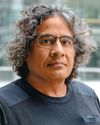
Late in the afternoon on February 24, the first day of the 85th plenary session of the All India Congress Committee, as former party chiefs Sonia Gandhi and Rahul Gandhi arrived at the venue of the meeting in Nava Raipur, party president Mallikarjun Kharge obliged the waiting camerapersons by making Rahul pause on the steps of the building, putting his arms around his shoulders and manoeuvring him to face the flashlights.
That moment captured the excellent rapport between Kharge and Rahul. It also offered a glimpse into the respective roles that the two leaders are likely to play-while Kharge would deal with organisational responsibilities, Rahul would remain the face of the Congress. And it was also clear that Rahul, fresh from the successful completion of the Bharat Jodo Yatra, was the centre of attention at the session.
The session was important in terms of establishing Kharge’s leadership before thousands of AICC delegates—the party’s representatives at the grassroots level. But it was clear from the very beginning that while Kharge would helm the organisation, Rahul, freed from organisational responsibilities, would lead the party’s outreach as its face and its chief communicator. If the session’s primary purpose was to ratify Kharge’s election and allow him to put in place his own team and provide him an apt occasion to spell out his vision for the party, the highlight of the event was the yatra and the difference it had made to the morale of the ordinary party worker as much as it had enhanced Rahul’s image.
Denne historien er fra March 12, 2023-utgaven av THE WEEK India.
Start din 7-dagers gratis prøveperiode på Magzter GOLD for å få tilgang til tusenvis av utvalgte premiumhistorier og 9000+ magasiner og aviser.
Allerede abonnent ? Logg på
Denne historien er fra March 12, 2023-utgaven av THE WEEK India.
Start din 7-dagers gratis prøveperiode på Magzter GOLD for å få tilgang til tusenvis av utvalgte premiumhistorier og 9000+ magasiner og aviser.
Allerede abonnent? Logg på

Too Much Sitting Can Accelerate Ageing
SITTING FOR EXTENDED PERIODS can harm the heart and accelerate ageing, even if you are young and get the minimum recommended amount of daily exercise, according to a US study published in the journal PLOS One.

Efficiency and innovation
As health care evolves, professionals must employ innovative methods to refine their skills

Level up
Only 30 per cent of needy patients are able to undergo transplant in India; we need more dedicated transplant centres

HOPE STEMS FROM A CELL
While stem cell therapies have shown success in treating blood disorders, orthopaedic ailments, autoimmune diseases and eye issues, there is hope that they can one day treat patients with heart disease, blindness, Parkinson's, HIV, diabetes and spinal cord injuries

Mind matters
Your mindset can limit or expand your physical ability

Cutting edge
Would you go under the knife if a robot was the one holding it? Or would you say, \"No way, I need a human touch\"? You might have to decide soon because a robot that can imitate skilled human surgeons is already here.

The smallest cut
Minimally invasive surgeries have a bright future, with virtual reality and 3D procedures offering greater precision and AI on the horizon

Signalling a revolution
Canadian scientist and entrepreneur Sachdev Sidhu is focused on bringing cutting-edge antibody engineering to his country of origin

Wellness on demand
Starting as a doctor-patient chat platform, Medibuddy has evolved to be India's largest on-demand, full-stack digital health care platform

HEARING AND VISION LOSS LINKED TO HEART DISEASE AND STROKE
A CHINESE STUDY PUBLISHED IN THE JOURNAL of the American Heart Association suggests that middle aged and older adults with sensory impairments, specifically hearing and vision loss, have an elevated risk of cardiovascular diseases, including stroke and heart attacks.